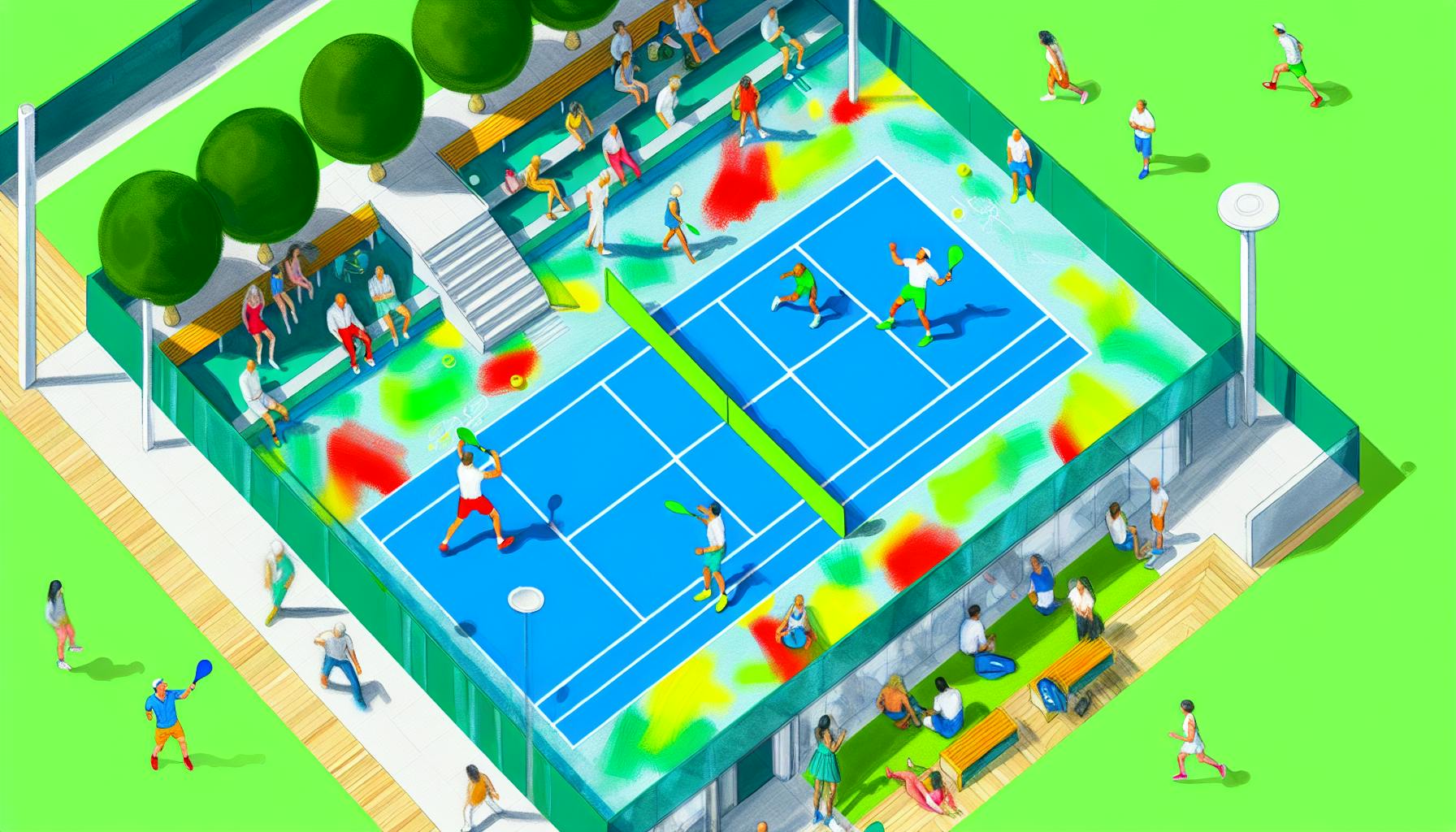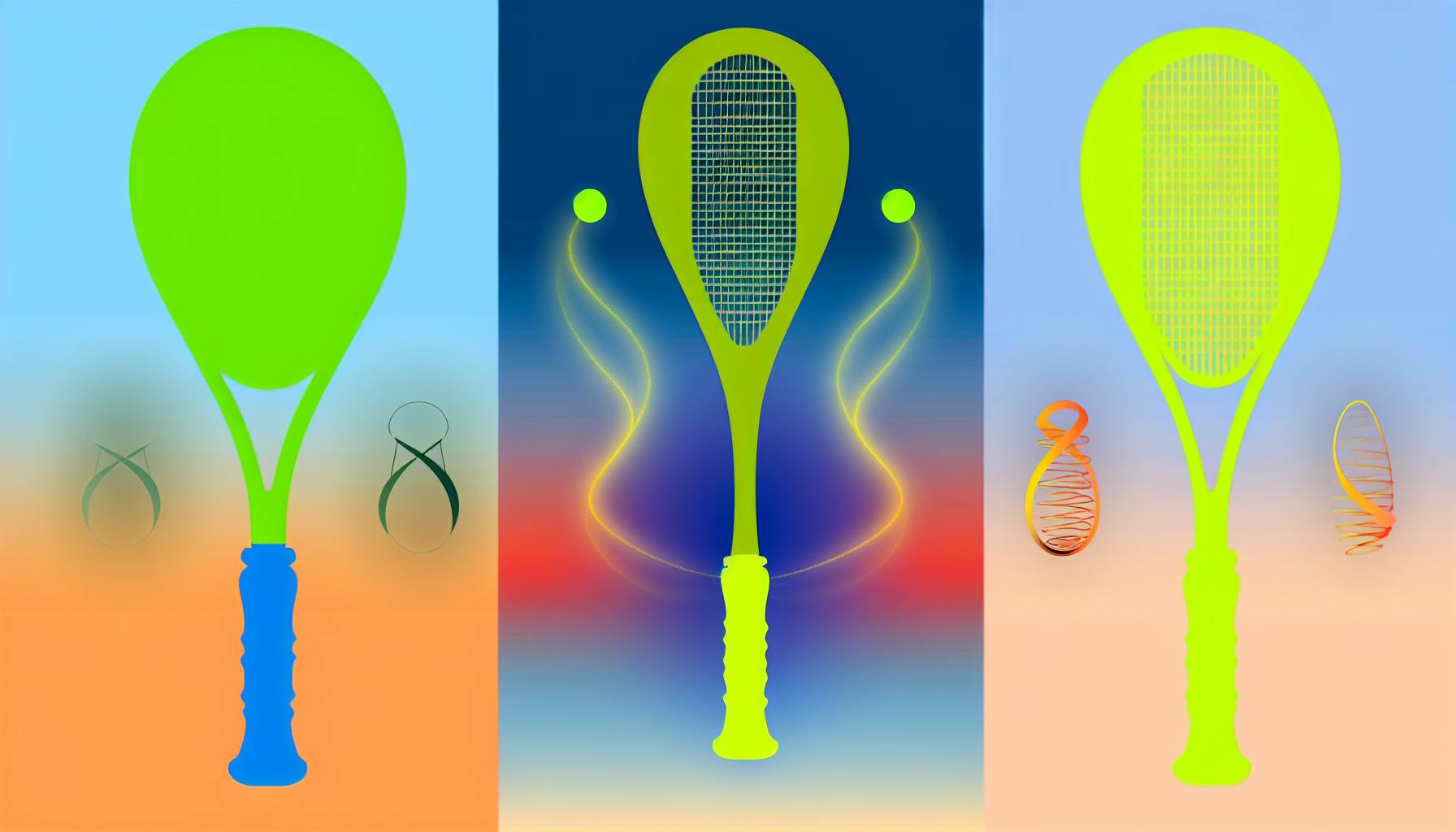If you play tennis or padel, replacing your overgrip regularly is key to maintaining a secure hold, improving control, and avoiding hand fatigue. Here’s the quick answer:
- Recreational players: Replace every 1–2 months if you play 1–2 times a week.
- Regular players: Replace every 3–4 weeks if you play 3–5 times a week.
- Competitive players: Replace weekly or after 5–10 hours of play.
- Professional players: Replace before each session or match.
Factors like how often you play, weather conditions, and personal comfort preferences affect how quickly your overgrip wears out. Signs it’s time to change include fraying, discoloration, loss of tackiness, or a slippery feel. Regular replacements keep your grip comfortable, improve performance, and help avoid hygiene issues. Overgrips are inexpensive, so keeping extras in your bag is always a smart move.
How Often Should I Change My Tennis Overgrip? - The Racket Xpert

What Affects How Often You Replace Overgrips
A fresh overgrip can make a noticeable difference in your game, but how long it lasts depends on several factors. Things like how often you play, the environment you play in, and your personal preferences all play a role in determining when it’s time for a replacement.
How Often You Play
How frequently you hit the court is a major factor. If you’re a casual player hitting the court once or twice a week, an overgrip might last you 1–2 months. For those playing more regularly - say, 3–5 times a week - you’ll likely need a new overgrip every 3–4 weeks. Competitive players or those practicing daily may need to replace theirs weekly or even more often. A good rule of thumb? Swap out your overgrip every 5–10 hours of play to maintain comfort and performance[2].
Weather and Sweat
Weather conditions and how much you sweat can also speed up wear. Hot and humid weather increases sweating, which can saturate your overgrip and make it lose its tackiness faster[2]. In these conditions, even a single match might leave your grip feeling slippery, requiring a quicker replacement. If you tend to sweat a lot, you’ll notice your grip breaking down faster, so changing it frequently is key - not just for performance but also for hygiene.
Personal Comfort Preferences
Your personal preferences for grip feel play a big role in deciding when to replace an overgrip. Some players prefer a consistently fresh, tacky feel and will replace their overgrip at the first sign of wear[3]. Others don’t mind a bit of wear and will keep using the grip until it shows obvious signs of breakdown. Whether you prefer a cushioned, soft grip or a firmer feel, your replacement schedule should match your comfort needs.
When to Replace Your Overgrip
Knowing when to replace your overgrip can make all the difference between nailing confident shots and dealing with frustrating slips. Let’s break it down.
Replacement Schedule by Player Type
For recreational players logging 1–4 hours of play each week, it’s best to replace your overgrip weekly. Even with lighter use, the tackiness diminishes over time, affecting your grip.
Club players, who practice several times a week, should aim to change their overgrips twice weekly. This is especially important ahead of matches or tournaments, where maintaining a reliable grip is crucial.
If you’re an aspiring pro or a junior training over 4 hours daily, six days a week, overgrip replacement becomes almost second nature. Plan to replace your overgrip 3–4 times per week to ensure consistency during intense training sessions. If you’re playing in hot or humid conditions, consider increasing the frequency.
How Professional Players Handle Overgrips
Professional players take it a step further, replacing their overgrip before every practice session or match. In particularly hot or sweaty conditions, some even change their overgrips between sets or games.
While this might sound excessive for casual players, the low cost of overgrips makes frequent replacements a worthwhile investment for consistent performance. Following these schedules can help ensure your grip remains reliable, no matter your level of play.
Replacement Schedule Chart
Here’s a quick guide to recommended replacement intervals based on your playing habits and conditions:
| Player Type | Frequency of Play | Recommended Replacement | Special Conditions |
|---|---|---|---|
| Recreational | 1–4 hours/week | Once per week | Replace more often in hot/sweaty conditions |
| Club | Several times/week | Twice per week | Especially before matches/tournaments |
| Aspiring Pro/Junior | 4+ hours/day, 6 days/week | 3–4 times per week | Increase frequency in warm/humid climates |
| Professional | Daily, multiple sessions | Before every session/match | Sometimes even between sets or games |
For a more precise approach, some players prefer to replace their overgrip every 6–8 hours of play[4]. This method works well if your weekly playing schedule varies, giving you a consistent way to track replacements.
If you sweat heavily or frequently play in extreme conditions, don’t hesitate to adjust these guidelines. Keeping your overgrip fresh is key to maintaining control and confidence on the court.
sbb-itb-5591e69
Signs Your Overgrip Needs Replacing
A worn-out overgrip can mess with your game by affecting your control and causing slips. Here’s what to look out for to know when it’s time for a replacement.
Visible Damage
The first clues are often what you can see. Watch for fraying edges, especially in the spots where you grip the racquet most. Loose threads and rough patches are clear signs the overgrip has seen better days. Discoloration is another big indicator - if a white overgrip has turned brown, it’s soaked up too much sweat and dirt to perform well anymore. Peeling layers are also a red flag. These create uneven surfaces that not only feel uncomfortable but also make your grip less secure.
You can also test for loss of tackiness by pressing your finger against the grip. A new overgrip should feel slightly sticky. If it feels slick or smooth instead, it’s time to swap it out. But even before you notice these visible signs, your performance on the court might start to suffer.
Poor Grip Performance
Sometimes, the way your racquet feels during play will clue you in before you spot any visible wear. If the grip becomes slippery, your racquet may shift in your hand during strokes, reducing control and forcing you to grip tighter than usual. This can throw off your shots and make playing less enjoyable.
Another sign is if the overgrip feels hard or rough, which means it’s lost its cushioning. A good overgrip should provide a comfortable buffer between your hand and the racquet handle. Many players notice hand fatigue or cramping when their overgrip wears out, as they unconsciously tighten their grip to make up for the loss of tackiness.
Beyond performance and feel, hygiene issues can also signal it’s time for a change.
Smell and Cleanliness Problems
If your overgrip develops an unpleasant odor, it’s likely due to sweat and bacteria building up in the material. Once the smell sets in, it’s a sign the bacteria have penetrated deeply, and cleaning won’t help restore the grip’s performance.
A grip that feels constantly damp or sticky in a bad way is another warning sign. This often happens to players who sweat a lot or play in humid conditions. Moisture trapped in the grip can lead to hygiene problems and even skin irritation.
Replacing an overgrip is a small investment compared to the discomfort - and potential hygiene issues - that come with using a worn or contaminated one. Keeping an eye out for these signs will help ensure your grip stays solid, so you can keep performing at your best on the court.
How to Make Overgrips Last Longer
Replacing your overgrip regularly is important, but a little extra care can stretch its lifespan. Taking the right steps not only saves you money but also keeps your grip feeling tacky and comfortable for longer. Here are some practical tips to help you maintain your overgrip.
Keep Hands and Grip Clean During Play
Sweat and dirt are your overgrip’s worst enemies. To combat this, wipe your hands and the handle with a small towel between games. Using sweat-absorbing wristbands can also make a big difference. Skip the lotions - oils can degrade the grip material faster than sweat.
After each match, clean the grip with a soft, damp cloth to remove dirt and let it air-dry completely. This prevents bacteria from building up and helps maintain the grip's texture. Keeping your grip clean works hand-in-hand with proper storage to extend its durability.
Store Your Racquet Properly
Where and how you store your racquet matters. Keep it indoors at room temperature with low humidity to avoid stickiness and unpleasant odors. Hot cars and damp environments are a no-go. Use a racquet bag equipped with silica gel packs to absorb moisture and a grip cover to protect against dust and dampness.
Keep Extra Overgrips Ready
Even with the best care, overgrips will eventually wear out. Having backups ensures you’re always ready for uninterrupted play. Store extra overgrips in a resealable bag inside your racquet bag to keep them clean and dry. Organize them by type or color for easy access during busy tournaments.
It’s also handy to carry a small pair of scissors and finishing tape in your bag for quick replacements. Practicing at home can help you feel confident about swapping grips during a match.
If you play in humid areas - like parts of the Southeastern United States - you may need to replace overgrips more often due to the extra moisture. Adjust your replacement schedule and the number of spares you carry based on your local climate and how frequently you play.
Conclusion
Keeping your overgrip in top condition is essential for maintaining control, comfort, and precision during your tennis or padel matches. A fresh overgrip not only enhances your performance but also reduces the chances of hand slippage, poor shot accuracy, and potential injuries. On the other hand, a worn-out grip can hold you back more than you might think.
The best approach is to combine a regular replacement schedule with attention to physical warning signs. For casual players, swapping out the overgrip about once a month works well. Regular players should aim for every 3–4 weeks, while competitive players - especially those in challenging conditions - may need to replace theirs weekly or even more often. Regardless of your playing habits, if your grip feels slippery, shows visible wear, or develops an unpleasant odor, it’s time for a change. After all, your grip is the one connection between you and your racquet, and its condition directly impacts every shot.
The upside? Overgrips are a simple and affordable way to keep your gear in great shape and boost your game. Interestingly, nearly 29% of players admit to never changing their grips, often just because they’re unaware of its importance[1]. Don’t fall into that category - keep extras in your bag, monitor your playing hours, and check your grip regularly to stay ahead of the game.
FAQs
How can I tell if it’s time to replace my overgrip sooner than expected?
If your overgrip starts showing signs of wear - like losing its tacky feel, becoming discolored, or feeling slippery during play - it’s probably time for a replacement. These issues can directly impact both your performance and comfort on the court.
Things like humidity, sweat, and heavy use can make your overgrip wear out even faster. If you often play in hot or humid conditions or have intense practice sessions, it’s a good idea to check your overgrip regularly to make sure it’s still giving you the grip and comfort you need.
How can I make my overgrip last longer in humid weather?
To make your overgrip last longer in humid conditions, focus on keeping moisture at bay. Use a towel to dry your hands during play and wear wristbands to limit sweat from reaching the grip. After your game, store your racket in a cool, dry spot to prevent the overgrip from soaking up extra moisture. If humidity is a constant challenge, consider overgrips made specifically to handle moisture or ones built for better durability in damp environments. Also, don’t forget to replace your overgrip regularly when it starts to wear out or loses its stickiness to maintain top-notch performance.
What signs of wear on an overgrip should I look for to avoid hygiene issues or skin irritation?
Overgrips don’t last forever, and signs of wear can affect both hygiene and comfort. Keep an eye out for discoloration, fraying, or spots where the material feels too smooth or slippery. These issues not only reduce grip performance but can also trap dirt and bacteria, which might lead to skin irritation.
To stay comfortable and maintain cleanliness, make it a habit to replace your overgrip regularly. If you’re playing often, swapping it out every 1–2 weeks is typical. For occasional players, a monthly replacement or changing it when you notice visible wear should do the trick.


